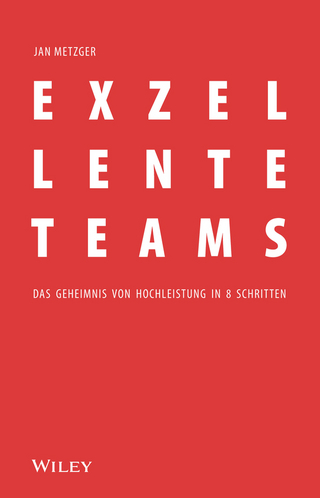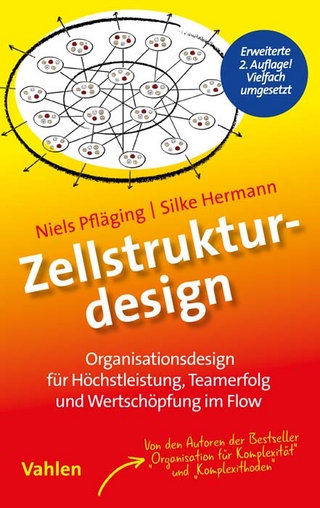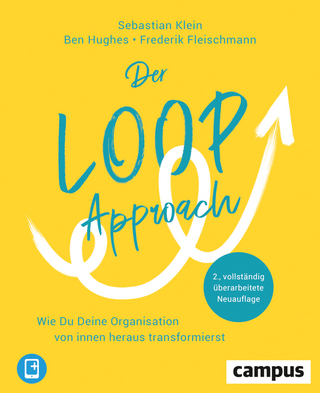
Organizational Behavior in Sport Management
Human Kinetics (Verlag)
978-1-7182-1568-9 (ISBN)
- Noch nicht erschienen (ca. September 2024)
- Versandkostenfrei
- Auch auf Rechnung
- Artikel merken
The desire of any organization is to have the entire staff working from the same playbook toward a common goal (i.e., “the championship”). Given individuals’ varying attitudes, beliefs, skills, and motivations, it’s a goal not easily achieved. Organizational Behavior in Sport Management, Second Edition, examines the individual, intrapersonal, interpersonal, and organizational processes fundamental to working within sport organizations, placing equal emphasis on what managers need to understand about human behavior and what each employee brings to the workplace.
This updated second edition blends classical research in the field of organizational behavior with the latest knowledge and best practices in the field of sport management. Organized into four major parts—Organizational Behavior in Sport Organizations, Managing the Individual, Managing the Group, and Managing the Organization—the text provides a foundational and contemporary examination of the inner workings of sport organizations. It offers a deep study of how all who work in sport organizations—whether they are administrators, executives, employees, players, coaches, or volunteers—operate independently, and it explores how these individuals interact with each other in the work setting.
Highlighted throughout the text are recent examples of how COVID-19; social movements; remote work; and diversity, equity, and inclusion initiatives have changed the nature of work and moved organizations to place greater emphasis on employees’ individual needs, desires, interests, empowerment, and satisfaction in their roles. In addition, numerous real-life examples from sport organizations in the United States and throughout the world provide practical application and underscore key concepts.
Each chapter features In the Boardroom sidebars, discussion questions, and a case study designed to help illustrate particular topics and facilitate focused discussion in class. The case studies are also included in the instructor guide for ease of assigning to students. New to this edition, a test package, chapter quizzes, and presentation package will aid in classroom preparation.
Organizational Behavior in Sport Management answers the key questions of why people do what they do at work, why others behave as they do, and how a person’s interpretation of events and behaviors is subject to their own biases. Students will gain an understanding of the most important organizational behavior concepts and a glimpse of how they might see themselves functioning in a sport organization today.
Eric MacIntosh, PhD, is a professor of sport management at the University of Ottawa in Canada. He researches and teaches on various organizational behavior topics, covering concepts such as culture, leadership, satisfaction, and socialization. His principal research interests are the functioning of organizations and how a favorable culture can transmit positively internally and outwardly into the marketplace. He is well published in leading peer-reviewed sport management journals and is a member of several prominent editorial boards. He is also the coeditor of the book International Sport Management. Laura J. Burton, PhD, is a professor of sport management and head of the educational leadership department within the Neag School of Education at the University of Connecticut. Her research interests include understanding leadership in organizations (particularly sport organizations) and exploring development, access, and success in leadership. Her work focuses on issues of gender in leadership contexts, specifically how stereotypes and discrimination affect women in sport leadership. She has served as the editor of the Journal of Intercollegiate Sport and serves on the editorial board of the Journal of Sport Management. She has been published in the Journal of Sport Management, Sport Management Review, and Sex Roles. She is coeditor of Women in Sport Leadership: Research and Practice for Change, published in 2017, and the textbook Sport Leadership in the 21st Century, published in 2014.
Part I. Organizational Behavior in Sport Organizations
Chapter 1. Importance of Organizational Behavior in Sport
Importance of Understanding OB
Creating a People-Centered Strategy
Organizations as Open Systems
Acquiring Knowledge and Experience in Sport Management
Summary
Discussion Questions
Chapter 2. Diversity, Equity, and Inclusion
Understanding Social Identity
Diversity Management and Inclusive Organizations
Outcomes Associated With Diversity Management
Challenges to Diversity in Sport Organizations
Does Diversity, Equity, and Inclusion Training Work?
Summary
Discussion Questions
Chapter 3. Ethics in Sport Organizations
Ethics
Developing an Ethical Environment in Sport Organizations
Importance of Leadership in Developing an Ethical Environment
Codes of Ethics
Ethical Decision Making
Ethical Guidelines in Human Resource Management
Corporate Social Responsibility
Future Challenges in Ethical Operations of Sport Organizations
Summary
Discussion Questions
Part II. Managing the Individual
Chapter 4. Understanding Personality and Attitudes
Intelligence
Understanding Personality
Personality and Emotional Intelligence
Cognitive Concepts in Personality
Motivational Concepts in Personality
Interactional Approach
Attributions in Organizational Behavior
Attitude
Important Attitudes in Sport Organization Workplaces
Summary
Discussion Questions
Chapter 5. Learning, Motivation, Training, and Development
Learning in Sport Organizations
Motivation Through Goal Setting
Performance in Sport Organizations
Training and Development to Enhance Individual Performance
Summary
Discussion Questions
Chapter 6. Job Satisfaction and Design
Understanding Job Satisfaction and Job Dissatisfaction
Enhancing Job Satisfaction
Stakeholder Satisfaction in Sport
Summary
Discussion Questions
Chapter 7. Stress and Well-Being
Causes of Stress
Negative and Positive Types of Stress
Stress in the Competitive Sport Environment
Trauma and Stress in Sport
Well-Being in the Workforce
Dealing With Stress
Preventing Stress From Becoming Burnout
Summary
Discussion Questions
Chapter 8. Socialization and Integration
Process of Socialization
Easing New Members Into the Workforce
Socialization Contexts
Temporary Versus Enduring Organizations
Internationalization of Sport
Summary
Discussion Questions
Part III. Managing the Group
Chapter 9. Leadership and Development
History of Leadership Research
Leadership Research in Sport
Summary
Discussion Questions
Chapter 10. Decision Making
Programmed Versus Nonprogrammed Decisions
Rational Model of Decision Making
Administrative Model of Decision Making
Garbage Can Model of Decision Making
Individual Decision Making
Risk-Taking in the Decision-Making Process
Decision-Making Challenges
Group Decision Making
Summary
Discussion Questions
Chapter 11. Effective Teamwork
Overview of Teams and Teamwork
Team Development
Team Roles
Team Effectiveness
Team Cohesion
Social Loafing
Common Team-Related Challenges
Enhancing Effectiveness for Virtual Team Collaboration
Summary
Discussion Questions
Chapter 12. Conflict, Negotiation, and Power
Conflict
Negotiation
Individual Types of Power
Summary
Discussion Questions
Part IV. Managing the Organization
Chapter 13. Communication in the Organization
Interpersonal Communication
Communicating Through Social Media
Common Communication Forms
Summary
Discussion Questions
Chapter 14. Organizational Culture
Emergence of Organizational Culture
Levels of Awareness
Values in Their Various Forms
Integrating the Employee Into the Culture
OC Scholarship in Sport
Summary
Discussion Questions
Chapter 15. Organizational Change
Organizational Change in Sport
Lewin’s Models: Change Management and Force Field Analysis
Greiner’s Patterns of Organizational Change
Sport Management Research on Organizational Change
Summary
Discussion Questions
| Erscheint lt. Verlag | 23.9.2024 |
|---|---|
| Verlagsort | Champaign, IL |
| Sprache | englisch |
| Themenwelt | Sachbuch/Ratgeber ► Sport |
| Wirtschaft ► Betriebswirtschaft / Management ► Planung / Organisation | |
| ISBN-10 | 1-7182-1568-1 / 1718215681 |
| ISBN-13 | 978-1-7182-1568-9 / 9781718215689 |
| Zustand | Neuware |
| Haben Sie eine Frage zum Produkt? |
aus dem Bereich


